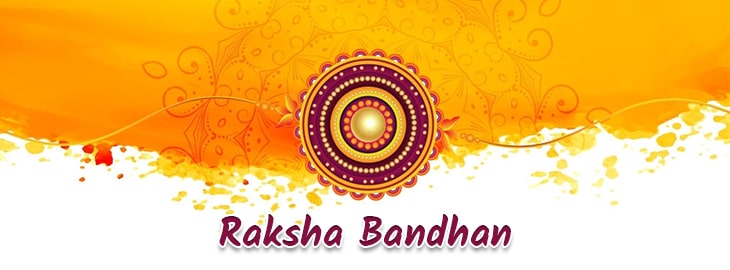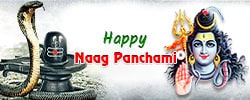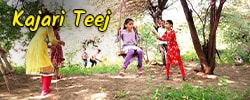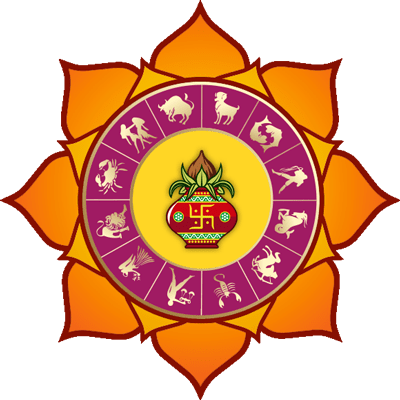
Raksha Bandhan
Get Raksha Bandhan 2024 date and Rakshabandhan Muhurat for New Delhi, India. It is also known as Rakhri or Rakhi Purnima.
Raksha Bandhan 2024
When is Raksha Bandhan in 2024?
Mon
19th
Aug
Rakshabandhan Muhurat For New Delhi, India
Raksha Bandhan Thread Ceremony Muhurat : 13:34:40 to 21:07:31
Duration : 7 Hour 32 Minute
Aparahan Time Raksha Bandhan Muhurat : 13:42:42 to 16:19:24
Raksha Bandhan Pradosh Muhurat : 18:56:06 to 21:07:31
Raksha Bandhan is celebrated on the full moon day of Shravan (also known as Sawan) every year; that is why it is also known as Rakhi Purnima. It is the day to celebrate the brother-sister love. Sister ties the Rakhi on brother’s wrist wishing him an affluent life and brother promise to protect his sister. The day is also known as Rakhi in some regions. It is one of the main festivals of India.
Raksha Bandhan Muhurat
Rakshabandhan thwack on the day when Purnima (full moon) of the Hindu month Shravan prevails during Aparahan Kaal. However, below given rules must be taken into thought:
- If Bhadra falls in the Aparahan Kaal on Poornima, Raksha Bandhan rituals cannot be performing in this period. In such case, if on the next day, Poornima is prevailing in the first three Muhurats of the day, the rituals can be perform in the Aparahan kaal of the 2nd day. It is because at that time, Sakalyapadit Purnima will exist.
- If Purnima is not prevailing in the first three Muhurats of the next day, Sakalyapadit Purnima will also not exist. In such condition, Rakshabandhan can be celebrated on the 1st day after Bhadra in the latter half of Pradosh.
Aparahan kaal is not considered significant at many places like Punjab. Hence, they celebrate the festival before Madhyahn, i.e. usually during early morning. But, our scriptures totally ban Raksha Bandhan celebrations during Bhadra, no matter what the circumstance is.
During Grahan Sutak and Sankranti (transit of Sun), this festival is celebrated without any inhibition.
How to Celebrate Rakhi Poornima?
On the festival of Raksha Bandhan, sisters tie a Rakhi on the wrist of their brothers. They wish for the long life, happiness, prosperity, etc. of their brothers.
A little packet of safety (Potli) carrying Akshat (Rice), yellow mustard seeds, golden wire, etc. must be tied on the right hand of the brothers by sisters. Same can be done by Brahmins to their Yajmans.
Following Mantra must be chanted while doing this:
ॐ येन बद्धो बली राजा दानवेन्द्रो महाबलः।
तेन त्वामपि बध्नामि रक्षे मा चल मा चल।।
Potli can be correctly worshiped by placing it on a Kalash (stoup) in a clean corner of the house before tying it on the hand.
The above Mantra has a story behind it. It is the Katha that can be recite during the Pooja. Let’s know it:
Once Yudhishthira asked God Krishna to tell him the story that can take away all the pains of human life. The story told by Krishna goes like this:
In pristine times, Devas (Gods) and Asuras (Demons) fought for 12 years consecutive. The Asuras were winning the war. King of the Asuras brought all tri Lokas (worlds) under his control and declare himself the Lord of the universe. Being tortured by the Asuras, Lord of the Gods, Indra consultation Guru Brihaspati (Mentor of the Devas) and solicited him to do something for their safety. On Shravana Poornima, early in the morning, Raksha Vidhan (process to form protection) was completed.
Guru Brihaspati had chanted the above given Mantra for the Raksha Vidhan. Indra, along with his wife, and recited the Mantra with Guru Brihaspati. Indrani, the wife of Indra, got Raksha Sutra validate by all the Brahmins and Purohits; and then tied it on the right hand of Indra. With the helping of this Sutra, God Indra could win over the Asuras.
There is another wacky way of celebrating Raksha Bandhan. Women get prepared in the morning for Pooja and then put gold on the walls of their house. Further, they worship this gold with sweet rice porridge (Kheer), vermicelli dessert (Sevaiyan), and sweets. They stick the Rakhi threads on the gold with the help of those sweet dishes. Those women, who sow wheat on Nag Panchami, keep these little plants in this adoration, and after tying Rakhi on the wrists of their brothers, they put these plants on their ears.
Some community peoples keep fast a day before this day. On the day of Raksha Bandhan, they celebrate Rakhi following the Vedic rituals. Also, they do Pitru Tarpan (homage to the departed souls of the family), and Rishi Poojan or Rishi Tarpan (homage to the saints).
In some regions, people also do Shravan Poojan. It is perform to pay the homage to the Shravan Kumar, who had died by the hands of King Dasaratha by mistake.
On Raksha Bandhan, brothers give nice presents to their sisters to make them joyful. If one doesn’t have his own sister, Raksha Bandhan can be celebrated with a cousin or anyone who is like sisters.
Raksha Bandhan Legends
Some legends are previously given above in the pursuit of explaining certain Pooja Vidhi’s. Rest of the associated legends is mentioned below:
As per the mythology, on this day, Draupadi had tied Krishna’s wounded hand with a piece of her Saree. Being grateful, he thought a pledge to Draupadi that he will protect her. That is why; Krishna came to the rescue of Draupadi during Cheer-Haran by Dushasana.
There is another legend in history of the Queen of Chittor, Karmavati. She had sent Rakhi to the Mughal Emperor Humayun in order to seek help from him. Humayun kept the respect of her Rakhi and sent forces to fight for the respect of his sister from the Emperor of Gujarat.
On this day only, Goddess Lakshmi had tied Rakhi on the wrist of King Bali, after his polite request.



